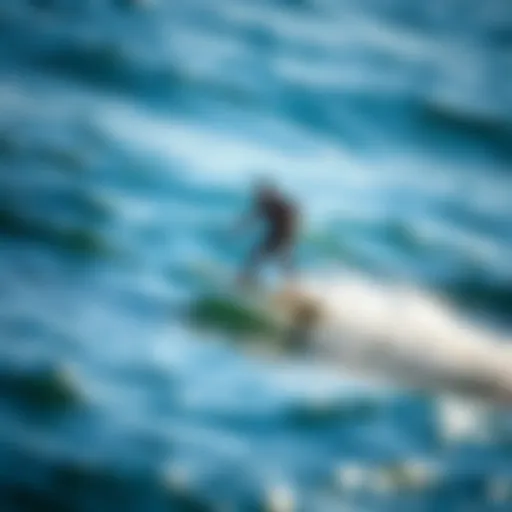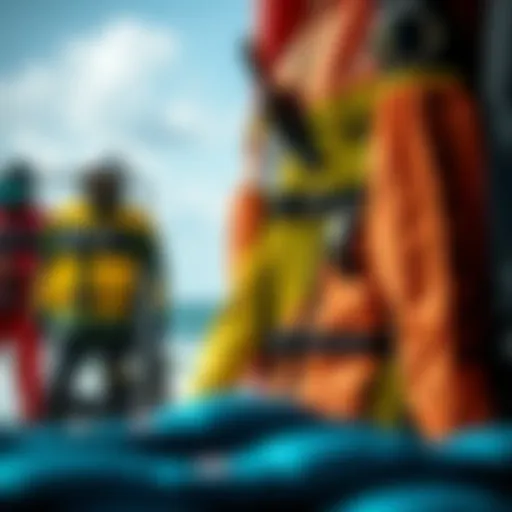Exploring the Essence of Camp: A Comprehensive Guide
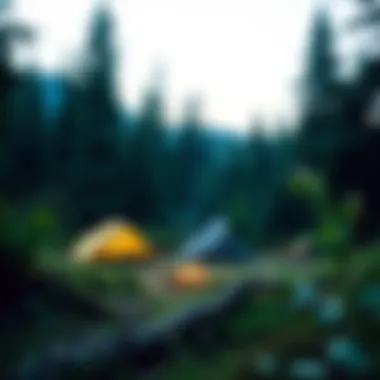
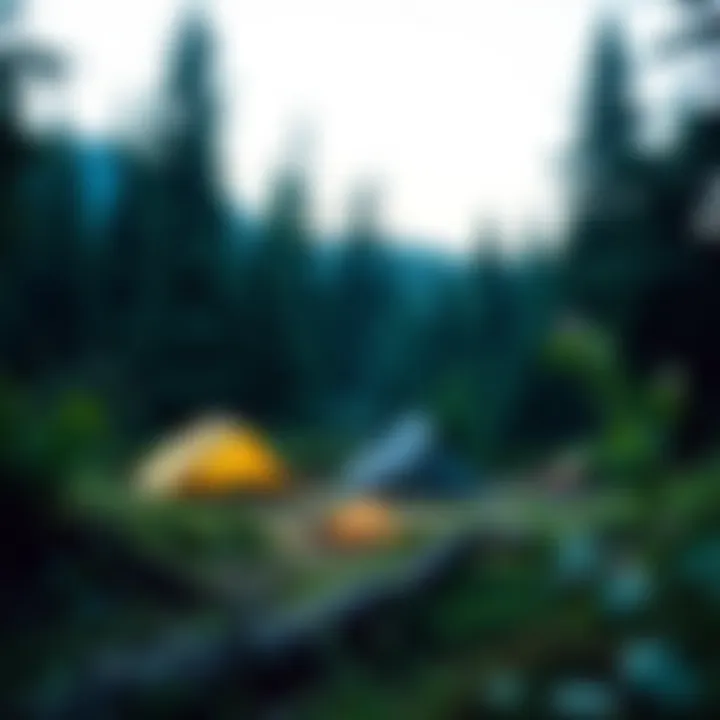
Intro
Camping evokes images of crackling fires, starlit skies, and the comforting embrace of nature. It’s far more than just a break from the hustle and bustle; it's a culture imbued with rich history and personal identities. Each year, millions of adventurers and outdoor lovers strap on their boots, pack their tents, and venture into the great outdoors, seeking solitude or camaraderie, discovery or escape.
This guide aims to peel away the layers of the camping phenomenon, looking at types of camping that span from the thrill of backcountry exploration to the structured nature of summer camps for youth. It highlights the evolving role of technology in how people engage with nature today, addressing the delicate balance between enjoying nature and preserving it.
Furthermore, we delve into how camping fosters community bonds and provides critical social interactions that often deepen friendships and create unforgettable memories. So, whether you are a seasoned camper or just contemplating your first trip, keep your mind open as we unravel the multiple facets of camping.
The richness of the experience is waiting for you, and by the end, you’ll probably find yourself planning that next outdoor adventure.
Defining Camp
Defining the concept of camp is paramount in understanding not just its origins, but also its evolution in modern society. At its core, camp embodies the idea of a temporary retreat from the ordinary, where activities revolve around specific experiences, be it adventure, skill acquisition, or social interaction. This definition allows for a broad spectrum of interpretations, reflecting various cultural contexts and personal experiences.
Camp serves as a bridge, connecting individuals to nature, community, and personal growth. It provides a space that encourages exploration and self-discovery, where participants can step outside their comfort zones and engage with the world differently. This thematic significance paves the way for several benefits that follow: increased confidence, collaboration skills in team environments, and natural resilience.
By placing camp in the recreational landscape, we see how it transcends mere leisure. It impacts developmental trajectories, particularly for youth, and offers unique opportunities for learning and adaptation in various settings. This deep-dive into camp's essence allows enthusiasts to understand its relevance not just in recreation, but in shaping identities and fostering connections within communities.
The Historical Context of Camp
To appreciate camp fully, one must consider its historical context. Traditionally, camps were birthed out of necessity, offering shelter in rugged terrains, serving as bases for exploration and survival. However, the concept evolved dramatically in the late 19th century with the emergence of organized camping movements, particularly in North America and Europe. This period saw a shift from utilitarian camping to a focus on outdoor education and leisure.
An interesting point to note is the establishment of the first youth camps. In 1885, the establishment of Camp Tamakwa in Ontario marked a pivotal moment. The founder, a passionate advocate for outdoor activities, emphasized the power of nature in fostering personal development. These early camps were all about fostering camaraderie and independence among younger generations.
As the decades rolled on, camp proliferated and diversified, responding to the voices of society. The introduction of specialized camps—sailing, art, and technology—paralleled changing societal needs and interests. Today, camps exist as a mosaic of experiences, catering to everything from aspiring kiteboarders to budding chefs.
Cultural Perspectives on Camp
Camps are not just isolated phenomena; they represent a confluence of cultural perspectives. Every camp shines a light on different values and practices, integrating local customs and traditions into the camper's experience. The local environment, too, plays a somewhat understated role in shaping camp activities. For those engaged in water sports like kiteboarding, camps might integrate elements that reflect maritime culture, fostering a respect for oceanic ecosystems paired with exhilarating performances on the water.
Beyond activities, cultural perspectives influence camp dynamics. For instance, while some cultures may emphasize competition, others celebrate collaboration. This distinction informs how campers interact and bond, impacting the overall atmosphere of the camp. Thematic camps, such as those with a focus on sustainability, offer participants a chance to connect not only with the activities but also with broader environmental issues, reflecting a deeper societal consciousness.
In essence, camp transcends mere physical boundaries and is steeped in historical significance and cultural narratives. The complexity surrounding camp enriches its definition, making it a vital component of recreational and educational landscapes alike.
"Camp is more than a physical space; it is a convergence of traditions, learnings, and connections that last a lifetime."
For further understanding of camp's heritage and cultural implications, consider reviewing resources from Britannica and Wikipedia that chronicle the evolution and significance of camping practices.
Types of Camps
Exploring the various types of camps offers insight into the diverse experiences, educational opportunities, and community connections that help shape individuals—especially those in the adventurous domain. Different camps cater to specific interests, provide tailored learning environments, and foster unique relationships based on shared activities and goals. Understanding these categories amplifies one’s appreciation of camp culture and its profound impact on personal development.
Summer Camps: Tradition and Evolution
Summer camps hold a special charm that resonates with countless individuals across generations. Traditionally, these camps operated as seasonal getaways from urban life, promoting youth engagement with nature and outdoor skills. Over the decades, however, the landscape of summer camps has shifted dramatically.
Today, they not only focus on the classics like canoeing and campfire stories, but they also embrace innovation—introducing programs with a focus on STEM activities, arts, and leadership training.
"The essence of camp is not merely about the activities; it's about the memories made and friendships formed."
Parents often seek summer camps that offer safe atmospheres rich in educational value while ensuring their children learn vital life skills. As an example, traditional crafts alongside technological advancements—like robotics—are becoming staples at many camps. This blend of old and new brings a fresh perspective to skill development and often ignites lifelong passions that extend beyond summer months.
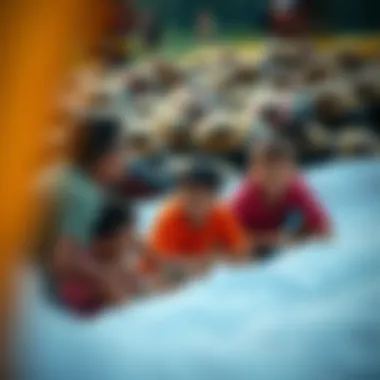
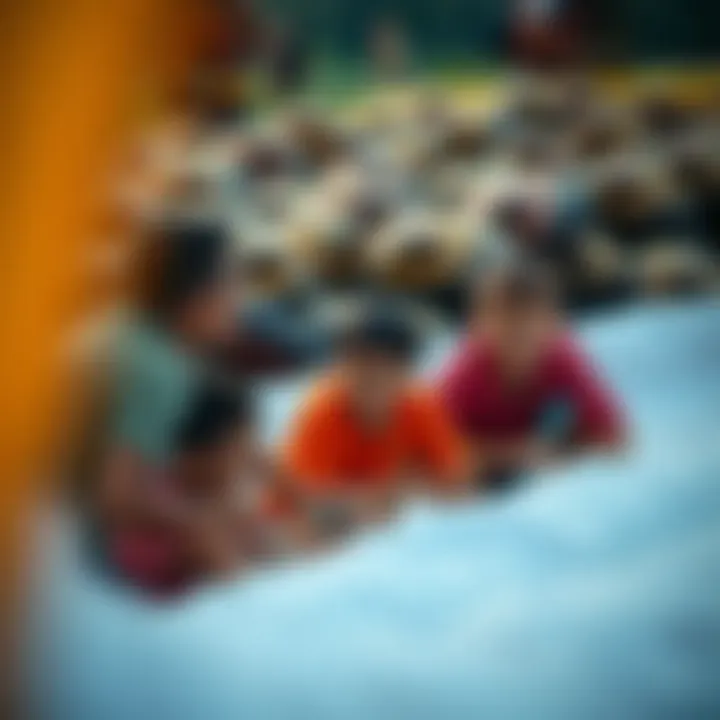
Adventure and Wilderness Camps
Adventure and wilderness camps cater to the thrill-seeker in every camper. These camps create immersive experiences that delve into activities like rock climbing, whitewater rafting, and even survival training. The backbone of these camps is centered on immersive outdoor experiences designed to foster resilience and adaptability.
For water sports enthusiasts, adventure camps often include kiteboarding, windsurfing, and other water activities, providing the perfect opportunity to learn under the guidance of seasoned instructors. The environment encourages participants not only to challenge themselves physically but also to bond with fellow adventurers who share a common love for adrenaline-based activities.
This approach instills a sense of camaraderie that often lasts long after camp concludes.
Specialized Camps: Focus Areas
Specialized camps are a colorful tapestry forming an important thread in the broader camping experience. They cater to niche interests such as sports, arts, science, and even cultural studies. For instance, a camp focusing on marine biology may offer participants hands-on experiences in aquatic environments while educating them about marine ecosystems.
In contrast, an arts-focused camp could provide budding artists a chance to experiment with various mediums—painting, music, and drama— often under the guidance of professionals in the field.
This kind of immersion allows individuals to hone specific skills and consider career paths that might not have come to light in a more general setting. Specialized camps also support networking; participants often form relationships that may blossom into collaborations down the line.
Finding the right type of camp, be it traditional, adventure-packed, or specialized, contributes fundamentally to an individual’s journey of self-discovery and skill enhancement.
Educational Aspects of Camp
Summer, sun, and adventure—the essence of camp is far more than just a break from daily routines. It offers a rich landscape for personal growth and development, adding additional layers of significance to outdoor experiences. Educational aspects of camp can shape not just knowledge but also practical skills and social dynamics, making it a valuable component of youth development and community engagement. As an amalgamation of play, challenge, and learning opportunities, camps serve as fertile ground for the seeds of maturity.
Skill Development Through Camp Activities
Camp activities are prime opportunities for skill cultivation. Here, the phrase "learning by doing" takes center stage. Participating in activities such as canoeing, rock climbing, or even campfire cooking can enhance various skills. For example, mastering the art of setting up a tent not only teaches camping etiquette but encourages problem-solving and fine motor skills.
- Teamwork: Group activities necessitate collaboration which fosters communication and trust among campers.
- Leadership: Taking charge during outdoor explorations can hone leadership capabilities. Young campers often find themselves in situations where they must guide others, making split-second decisions.
- Physical Skills: Learning to navigate the terrain enhances agility and builds physical confidence, crucial in any outdoor setting.
"Camps transform novices into skilled adventurers, making every day a lesson in resilience and adaptability."
Furthermore, camps often leverage momentary challenges to instill values like perseverance and self-discipline. A camper faced with a difficult hiking trail learns to push past discomfort, thereby building mental fortitude that extends to other life areas.
Social Learning Camp Environments
The social learning environment within camps is pivotal. Campers come from various backgrounds, and this diversity creates rich interaction opportunities. Learning doesn’t happen solely in structured lessons; it’s deeply woven into the relationships formed during shared experiences. Whether it’s sharing stories around a campfire or collaborating on a project, social skills blossom.
- Conflict Resolution: Differences in opinions are inevitable; however, navigating these differences in a respectful way teaches empathy and negotiation skills.
- Cultural Exchange: Encountering fellow campers with varied traditions promotes an understanding of different cultural perspectives, fostering global awareness from a young age.
- Friendship Building: The bonds formed during these interactions often culminate in lifelong friendships, giving the campers vital social support networks.
This melting pot of experiences promotes growth in emotional intelligence. Campers learn not only about their surroundings but also about themselves and others, which can stick with them for years to come. Engaging in collaborative activities encourages shared learning and growth in ways that classroom settings simply can't replicate.
In summary, the educational aspects of camp blend personal, social, and skill development to create dynamic learning environments. They prepare individuals to face the world with a toolkit of resources that will benefit them long after the camping escapade ends.
Environmental Considerations
Environmental considerations are paramount when discussing the world of camping. As outdoor enthusiasts tread into the wilderness, it’s critical to reflect on our impact and ensure we protect the beauty around us while also enjoying it. This section explores sustainable camping practices and addresses how camping can affect natural habitats, shedding light on responsible outdoor behavior that can benefit both campers and the ecosystems they influence.
Sustainable Camping Practices
Sustainable camping practices focus on minimizing one’s footprint while enjoying the great outdoors. They encourage adventurers to act as stewards of the environment by using techniques that protect and preserve nature. Here are some methods to adopt:
- Leave No Trace: Central to sustainable camping, this principle advises leaving the site as you found it. Pack out all trash, and respect wildlife by avoiding feeding or disturbing them.
- Eco-Friendly Gear: Utilizing sustainably sourced materials in camping gear is a wise choice. Brands that prioritize environmental responsibility help reduce the overall negative impact of outdoor gear production.
- Water Conservation: When you're in the wild, every drop counts. Follow best practices for water usage, such as using biodegradable soap and taking shorter showers if facilities are available.
Adopting these practices not only helps preserve the beauty of nature but also sets an example for others. The more people commit to sustainability, the less wear and tear on the Earth.
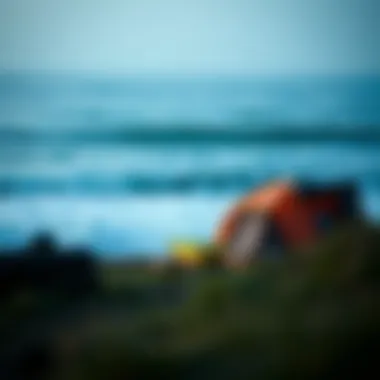
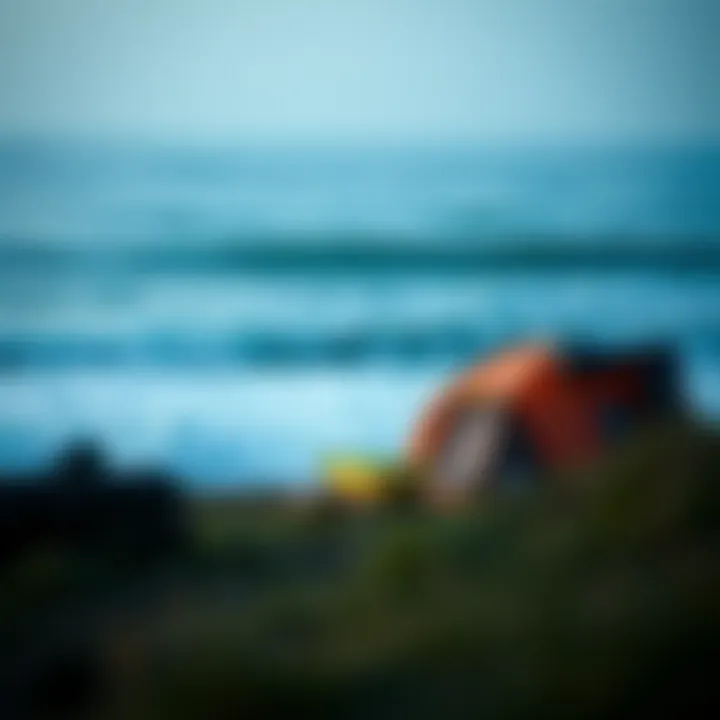
The Impact of Camping on Natural Habitats
Camping undeniably leaves a mark on natural habitats. While the act of camping can bring people closer to nature, improper practices can lead to detrimental impacts on the environment. Understanding these effects is crucial for all campers.
- Soil Erosion: High foot traffic in sensitive areas can lead to erosion. Trails can become worn down over time, losing vegetation and soil stability. It's a smart idea to stay on marked paths whenever possible.
- Wildlife Disruption: Sounds and smells from campsites can disrupt the local fauna. Animals, accustomed to the quiet of nature, may avoid areas heavily trafficked by humans, diminishing their habitats and breeding grounds.
- Flora Damage: From the slicing of tent pegs to campfires burning roots, flora susceptibility can vary, but damaging plants can hinder ecosystem balance. Campers should select durable areas for setting up their sites.
Technology in Camp
The world of camping is undergoing rapid transformations, thanks to advancements in technology. Camping used to mean roughing it, embracing the wild without the luxuries of urban life. However, that perception is shifting. Now, technology plays a significant role in enhancing the camping experience—not just for convenience but also for safety and connectivity. Today, campers can enjoy the great outdoors while still having access to modern tools that can make their adventures smoother.
Gear Innovations for Modern Campers
When it comes to gear, innovations are reshaping how we approach the outdoors. Think about the introduction of inflatable paddle boards and portable solar panels. These tools have taken camping beyond the basics, making it easier for enthusiasts to explore diverse terrains. Lightweight, durable materials that are now commonplace in tents and sleeping bags ensure that campers can pack light without sacrificing comfort.
Key Innovations:
- Smart Backpacks: Equipped with charging capabilities, these backpacks allow you to keep your devices powered on longer adventures.
- Multi-Functional Camping Tools: Items like a knife that includes a whistle, bottle opener, and screwdrivers in one can save space and weight.
- Gourmet Camp Stoves: Modern small stoves allow for more intricate meal preparation—think of a two-burner stove with a grill option.
It’s clear gear innovations cater not just to comfort, but to a deeper engagement with nature. These advancements also allow campers to stay safer and more informed about their surroundings, such as tracking weather changes or GPS navigation through apps or wearable tech.
Digital Resources for the Camping Experience
In the age of smartphones and high-speed internet, digital resources are enhancing the way enthusiasts plan and experience camping trips. From apps that provide real-time weather updates to platforms that offer suggestions for local campsites, the digital realm has become indispensable for campers.
"Digital tools help ensure that your adventure is not just exciting but also safe and well-informed."
Notable Digital Tools:
- Camping Apps: Applications like AllTrails or Campendium help campers find trails, read reviews, and discover suitable camping locations all at their fingertips.
- Navigation Aids: GPS devices or smartphone map apps provide precise directions, reducing the chances of getting lost in unfamiliar routes.
- Community Forums: Websites like Reddit, and specialized Facebook groups can connect campers with others who share valuable suggestions and insights that may not be found in guidebooks.
Combining these digital resources with modern gear leads to a camping experience that embraces both tradition and innovation. Campers can remain connected not only to their fellow adventurers but also to the guidance necessary for navigating wilderness safely.
In summary, technology has redefined camping, shifting it from just a rustic getaway to a more integrated experience. By embracing these advancements, outdoor enthusiasts can ensure that their time spent in nature is as enriching and enjoyable as possible.
Community and Social Interaction at Camp
Camping is not merely an activity of disconnecting from the daily grind; it serves as a unique breeding ground for community and social interaction. In the heart of nature, amidst towering trees and gentle breezes, individuals from all walks of life converge, creating bonds that can last a lifetime. Each camp session offers more than just recreational activities; it fosters relationships built on shared experiences, mutual interests, and the sheer joy of being immersed in the great outdoors.
Building a Sense of Community
At its core, camp is about creating a nurturing network of individuals who find themselves united in a common pursuit—whether it’s sharing the thrill of navigating waves or exchanging stories around a crackling campfire. The communal atmosphere of camping encourages participants to step outside their comfort zones, making friends and allies along the way.
A few elements that contribute to this sense of community include:
- Shared Experiences: Engaging in camp activities like hiking, canoeing, or cooking together contributes to a collective journey. The challenges faced, whether conquering a steep hill or preparing a meal with limited utensils, enhance camaraderie.
- Dialogue and Interaction: Interaction through discussions around campfires or shared mealtimes allows for organic connections. Participants can share stories and wisdom, creating a tapestry of shared memories that enrich everyone’s experience.
- Team-building Activities: Many camps incorporate exercises designed to bring participants together. Activities like group challenges or team sports create an atmosphere of collaboration that strengthens relationships.
Building a sense of community is essential as it cultivates feelings of belonging and support, making each person feel valued and understood during their camping journey.
Networking Opportunities through Camping
Camping also offers unique networking opportunities that can extend beyond the campfire. The diverse backgrounds and expertise present can open doors to new possibilities, whether for personal growth or professional networks.
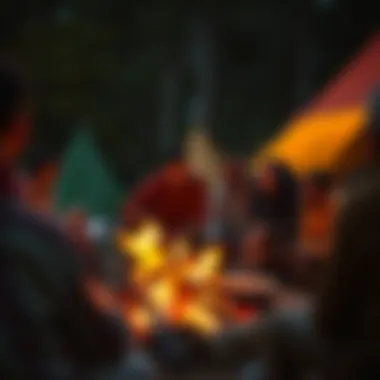
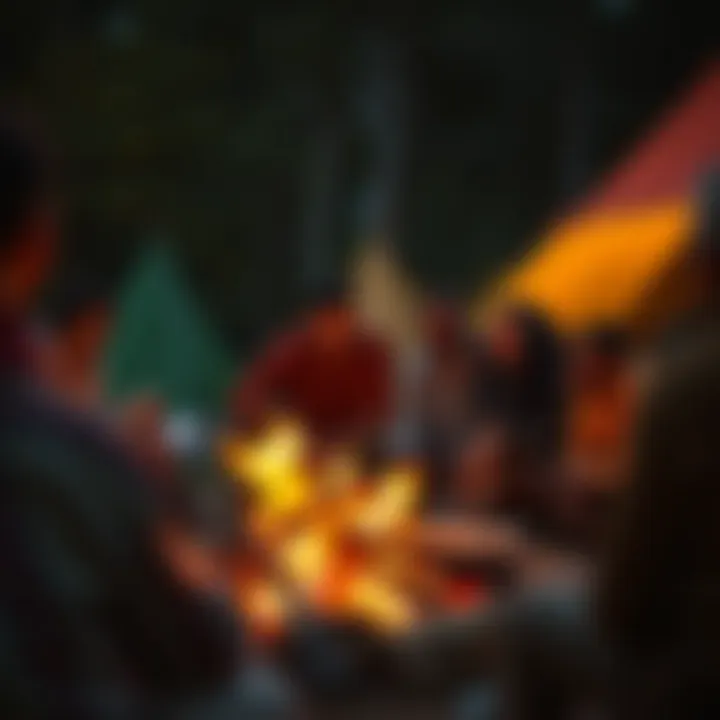
- Connecting with Like-minded Individuals: Camp settings gather people with similar passions—be it outdoor sports, environmental preservation, or simply a love for nature. This common ground lays the foundation for deeper connections.
- Skill Sharing: As participants share their knowledge, whether it’s about kitesurfing techniques or water safety, they not only grow individually but also contribute to a thriving community. Knowledge exchanges can lead to collaborations, helping everyone advance in their skills.
- Opportunities for Mentorship: Camps can serve as an informal platform for mentorship. Experienced campers can guide novices, fostering relationships that can lead to educational or career opportunities later on.
"In the heart of nature, the bonds forged are as strong as the roots of ancient trees. It’s this deep connection that ultimately transforms individuals into a cohesive community."
The rich tapestry of social interaction and community building throughout camping experiences plays a pivotal role in allowing participants to grow, connect, and thrive together. It instills a sense of purpose and belonging, reminding us that we are part of something larger than ourselves, while also enriching our lives personally and socially.
For more insights into community-focused camping, visit Wikipedia on Camping or explore community networking platforms like Reddit's Camping Community where experiences and tips are freely shared.
Challenges and Considerations in Camping
Camping is not all sunshine and rosy adventures; it comes with its fair share of challenges and considerations that cannot be overlooked. Understanding these hurdles is vital for both novice and seasoned campers. It helps in planning more thorough and safe experiences while maximizing enjoyment.
One of the primary benefits of being aware of these challenges is that it fosters preparedness. Knowing what potential obstacles lie ahead allows campers to pack properly, choose appropriate locations, and adopt necessary safety measures. Moreover, being aware of these considerations can enhance both individual and group experiences, making one feel more connected to nature and fellow campers alike.
Safety Protocols and Preparations
When stepping into the arms of nature, safety should be the top priority. Camp sites may seem idyllic, but the reality is that unexpected situations can quickly turn a fun trip into a nightmare. That's why establishing robust safety protocols is crucial, whether you're venturing out for a weekend or a longer trek.
Before packing your gear, consider the following:
- Planning the Route: Familiarize yourself with the trails and camping sites. Use maps or digital GPS tools. Know what lies ahead.
- First Aid Kit: Always carry a well-stocked first aid kit. Ensure it includes essentials like bandages, antiseptic wipes, and any personal medications.
- Emergency Plans: Have a plan in case of emergencies. Share your plans with someone who won't be going with you. Establish when to check in.
- Wildlife Awareness: Understand the local wildlife. Know how to safely encounter or avoid animals. For instance, learning how to properly store food to keep bears at bay is essential.
These preparation steps are akin to having a sturdy life jacket while kiteboarding; it doesn’t just enhance safety, but also gives one the peace of mind to enjoy the ride.
Weather Challenges and Resilience
The unpredictability of weather can add layers of complexity to any camping trip. A sunny forecast can quickly morph into rain or strong winds, which in turn can test the resilience of even the most seasoned camper. Preparing for weather-related challenges is essential for safety and comfort during your experience.
- Understand the Forecast: Before heading out, keep an eye on weather reports. Apps like Weather.com or local news stations can provide crucial updates.
- Pack Smart: Bring waterproof gear and additional layers to shield against rain or colder temperatures. Don’t forget a good quality tarp or rainfly for your tent.
- Flexible Itinerary: Be prepared to change your plans if the weather turns sour. Being stuck in a storm can ruin the vibe, so having alternative options in mind can save the day.
"In every walk with nature, one receives far more than he seeks." – John Muir
The ability to adapt and remain positive in the face of changing weather conditions can often enhance the overall camping experience. Got drenched? Find joy in the sea of puddles and let loose.
Acquiring a keen awareness of these challenges allows campers to engage with their environment with a sharper, more appreciative eye. Being proactive rather than reactive makes all the difference, proving that with proper planning, even the hurdles along the way can turn into fond memories later shared around the campfire.
Future Trends in Camping
Understanding the future trends in camping is essential to grasp how this activity continues to adapt and thrive in a changing world. Camping, once seen as a simple escape from daily life, is morphing into an intricate mode of recreation that resonates with tech-savvy adventurers, environmental advocates, and social explorers alike. It serves as a reflection of societal shifts, technological advancements, and the evolving needs of modern campers. This section aims to dive into the intricacies of upcoming trends in the camping sphere, highlighting their significance for both seasoned campers and newcomers alike.
The Evolving Landscape of Camping Experiences
Camping is not what it used to be. In recent years, we've seen a significant shift in how individuals perceive and engage with the great outdoors. Gone are the days where camping solely meant pitching a tent in a remote location with minimal amenities. Today, experiences range from luxury glamping sites with all the comforts of home to minimalist approaches that emphasize simplicity, connection with nature, and hence a greater appreciation of the environment.
- Glamping Innovations: For those who prefer comfort while soaking in nature, glamping has surged in popularity, blending adventure with luxury. Campers can now find unique accommodations like yurts, eco-pods, and treehouses equipped with chic furnishings and fancy amenities.
- Wildlife Conservation Camps: Tying adventure with conservation efforts, some camps now focus specifically on wildlife preservation and education, allowing participants to contribute to ecological studies and community initiatives while experiencing nature closely.
- Individualized Adventure: Personalized camping experiences have also taken root. Users can curate their trips through mobile applications or websites that offer tailored itineraries based on interests, skills, and desired environments.
This redefined landscape caters not just to individual preferences but also invites a variety of demographics, including families, solo travelers, and couples seeking connection.
"Camping today shapes and is shaped by our collective desire for deeper connection, not only to nature but to each other in a shared experience."
Projecting the Future of Community Camping
As society evolves, so does the notion of community within the camping realm. Future camping experiences will likely center around fostering community ties as vital components of the outdoor journey. Key factors contribute to this trend:
- Interactivity and Communication: With advancements in technology, campers can interact more than ever. Campsites may soon integrate platforms that allow easy communication among campers, enhancing the sense of community and connection.
- Collaborative Workshops: Expect community-oriented camps that promote skill sharing and collaboration. Workshops focusing on survival skills, gourmet outdoor cooking, or even nature photography could flourish, enhancing the communal aspect of camping trips.
- Social Initiatives: Future camping may see more initiatives aimed at inclusivity. Creating spaces that welcome diverse groups ensures that everyone can share in the outdoor experience. Organized events, such as community camp-outs or cultural celebrations in nature, enrich the camping experience for all participants.
In summary, the future of community camping appears poised to thrive on togetherness and shared experiences. As technology and social dynamics intertwine, a more interconnected approach to outdoor engagement emerges, promising not only adventure but a deeper societal impact.





